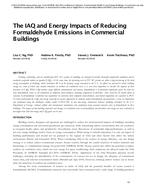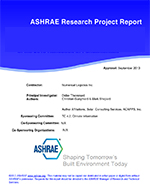Click here to purchase
As observed in earlier studies, there is evidently a performance gap between the predicted annual energy use from building performance simulations basedon traditional deterministic methods compared to the monitored annual energy use of a building. The hypothesis is that using a probabilistic methodmakes it possible to consider the uncertainties in the input data and quantify the overall uncertainty of a building design using a probability distributionfor the predicted energy performance of a building. Thus, reducing the performance gap between the predicted and monitored energy use. This paper aims todetail the advantages and disadvantages of both the deterministic and the probabilistic methods when determining the energy performance of a building andevaluate the differences based on a qualitative analysis. The differences between the methods are evaluated further based on the results from a previous casestudy where the probabilistic method has been implemented in two dynamic building performance simulation software. The conclusion from this study isthat both methods have their specific advantages and disadvantages, however the main differentiating point is the scope of application. The deterministicmethod is a simpler alternative, needing a less amount of data and is performed in less time, thus making it advantageous in early phases when the basicdesign of a building is decided, and available information still is limited. However, this method must make use of an arbitrary margin of safety when usedfor code compliance. The perceived accuracy of the results, since the software reports the result to several decimals, are often misleading since the numericalvalue says nothing about the probability of fulfilling the requirements. The probabilistic method is more robust and requires more information, such as alarger quantity of data for each factor, and more advanced knowledge of both energy performance and statistics from the operator. Because of this, it alsorequires more computational power and is more time consuming. Thus, the method is more advantageous for analysis and determining the risksassociated with not fulfilling the building regulations, since the method determines the probability of failure, instead of using an arbitrary margin of safety.
Citation: Thermal Buildings XIV 2019
Product Details
- Published:
- 2019
- Number of Pages:
- 9
- Units of Measure:
- Dual
- File Size:
- 1 file , 740 KB
- Product Code(s):
- D-Bldgs19-090


